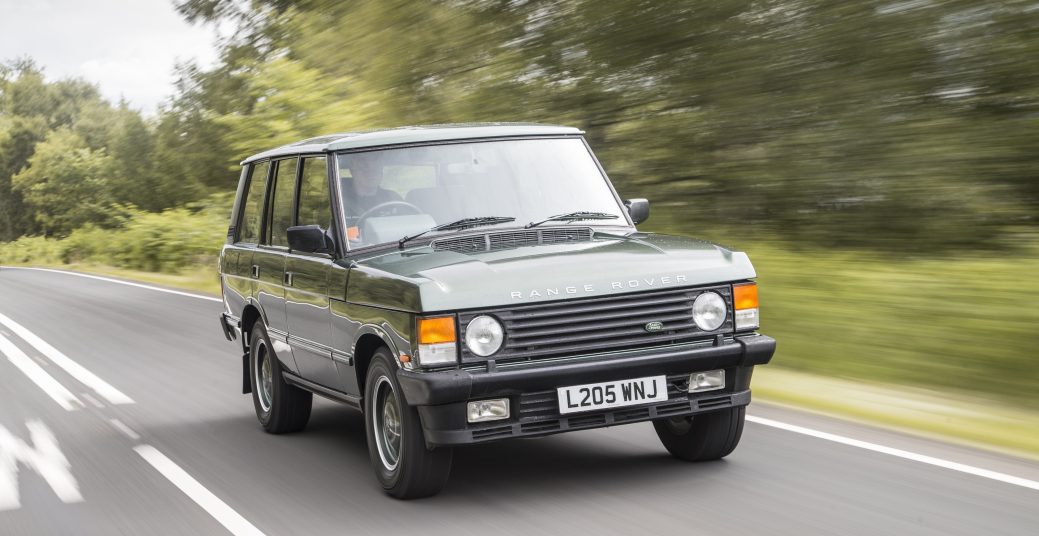John Craddock Ltd Magazine (September 2021)

From a curious start to being one of the most well-known models on the roads today, the Range Rover has stood the test of time and found its own audience outside of the Land Rover niche, but where on earth did it all begin?
Timeline
1969 – Pre-Release and the Velar
We start our journey back in 1969, with plans for a car that would be different and refined. A model was built, 26 of them in fact, dubbed ‘Velar’ to keep the Range Rover plans under wraps. Note the name that eventually made its way to front and centre some 48 years later!
1970 – Release Date
Back to the story…
After successful testing, Range Rover was let loose into the world in 1970, the first vehicle to offer permanent four-wheel drive, complete with Land Rover’s capability, and teamed with stunning, elegant design. It was the car that could do it all, and it quickly rose to fame in its own right.
1981 – Modifications
Eleven years on, the three-door vehicle was released as a four-door, offering more flexibility and accessibility for owners and fans.
1994 – Second Generation
With luxury being a leading factor in the Range Rover’s desirability, in 1994, the second generation was released, with more mod cons and the introduction of rectangular headlamps, replacing the previously circular ones.
2001 – Further Refinement
Fast forward to 2001, the Range Rover kept its iconic shape but was built with a monocoque singular shell body as a small change in design.
2005 – A Sporty Change
It wasn’t until 2005 that we saw another kind of Range Rover on the market, and that was the birth of the Sport. A slightly refined style, performance like no other and, little did we know back then, a soon-to-be icon. More affordable than the Classic but without scrimping on any of the finer details, the Sport fast-tracked its way to success.
2011 – The Release of the Evoque
2011 saw the Evoque join the lineup, and a year later, the Classic Range Rover got its next update, still retaining that classic silhouette, with the addition of Terrain Response technology as well as other minor updates to bring it in line with the times.
2013 – The Beginning of Hybridisation
When thinking about hybrid cars, we often think of smaller vehicles reliant on charge points and lacking power behind them. Range Rover challenged this. In 2013, they released a hybrid version of their 4th generation model designed to prove the naysayers wrong,
How did they challenge this, you ask?
They took their new vehicle on a driving test to test its performance and endurance. From Solihull to Mumbai. Via the Himalayas.
Not a bad run.
2015 – Release of the Autobiography
As if the luxury already set out wasn’t enough, 2015 saw the arrival of the SV Autobiography, complete with aluminium finishes and executive seats for the ultimate driving experience. Still, a core part of the range and a head-turner on the streets, the Autobiography climbed the ladder of popularity with the public.
2017 – Return of the Velar
Crisp design and a more relaxed shape, in 2017 we got the Velar, that name that we started with at the beginning of this journey. With the promise of performance and capability, in a different shell and shape, but still unmistakably Range Rover through and through.
2020 – Fifty Years of Success
To round it off, to mark 50 years, the ‘fifty’ edition, with just 1970 made worldwide.
What made Range Rovers such a standout?
We believe it is down to the design.
There isn’t a detail untouched or a part missed. Every element of the Range Rover is planned with precision to offer style, luxury and the performance we would expect to see in a Land Rover. The brand has never forgotten its roots and knows how to bring cars to the market that will do exactly what they need to and look good doing it too.
Over the years, very little has changed in the shape and style of the Range Rover, making for iconic designs and coveted cars that keep owners coming back, motor after motor. Nothing else seems to compare, and even with more mod cons and tech coming into play, the experience is still seamless and smooth, not a clunky button or misplaced compartment in sight.
Not many brands manage to stand the test of time for over 50 years, without major overhauls and pivots for the business. But, Range Rover, is an exception to that observation, and continues to deliver cars that can handle more than we can throw at them.
The Future
Hybrid and electric are expected to be on the agenda, with the ban of new petrol and diesel cars coming into play by 2030. But, ahead of the game, and ahead of the curve, we already have a range of hybrids to choose from, with research and development going on all the time to improve, adapt and build on the current range.
At John Craddock, we are firm Range Rover fans, and stock a variety of parts and accessories to complement the design and ease of the vehicles. You can shop for them here.
The September 2021 issue of John Craddock is all about embracing the history of the Land Rover and continuing our preparations for Autumn.







